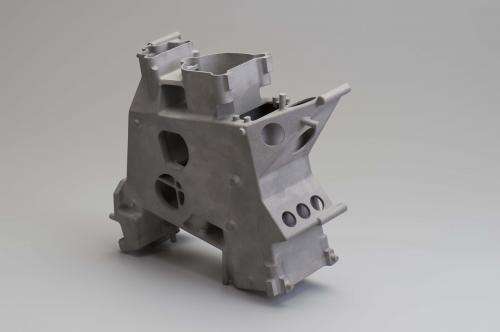Instrument housing produced with 3-D printed mould

3D printing offers engineers various ways to construct hardware that simply could not be built in any other manner – such as this single-piece casing to house an optical instrument for Earth observations.
In this case, the desired shape was initially 3D printed in wax. The wax model was then dipped into a ceramic slurry to create a hard shell.
The wax was then melted away and molten aluminium poured in the hollow ceramic mould to produce the final part.
This prototype casing demonstrates another potential advantage of using 3D printing to create very complex space parts in a single piece.
Extremely complicated shapes can be manufactured without the need for joins or welds, using less raw material and energy than traditional manufacturing, and with a reduced number of steps.
ESA's Product Assurance & Safety Department is looking at how 3D printing can be applied to space missions, including the development of common industrial standards for manufacturing and testing of products.
Provided by European Space Agency



















